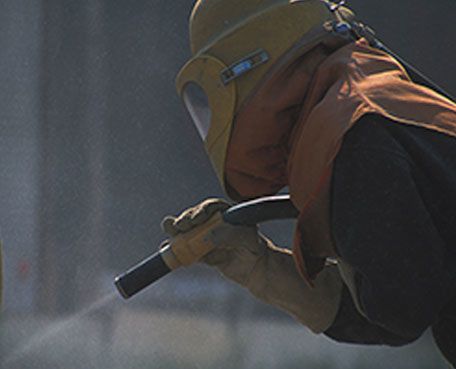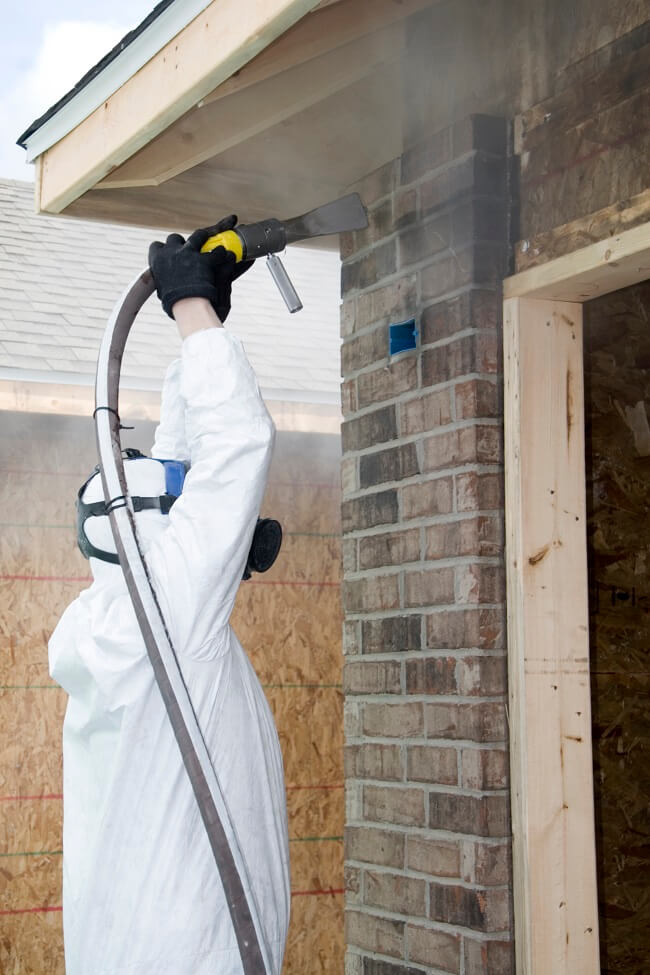
Fire mitigation efforts can cause cosmetic and structural damage to your business. Even water can displace dirt and mud, leaving your structure filthy. Some cleaning methods are costly or ineffective, and others are too harsh, which causes further harm to more delicate materials. At Unlimited Restoration, our teams use soda and sponge blasting equipment for gentle, cost-effective fire restoration.

Soda blasting is a sustainable way to remove dirt and debris from buildings damaged by fire mitigation efforts. Soda blasting uses sodium bicarbonate — the same compound in baking soda — and pressure to clean surfaces without causing more damage. The specific type of baking soda used in soda blasting after fire damage is different from the sodium bicarbonate you have in your kitchen. This form has jagged edges and large shapes that make it more abrasive.
We use a soda blaster, which pressurizes the crystals. The crystals then explode, cleaning the surface and leaving only a fine powder behind.
Sponge blasting is similar to soda blasting. It has related applications for fire restoration in delicate places and can remove paints and contaminants. The main difference lies in the materials each process uses. Instead of sodium bicarbonate, sponge blasting uses a material called sponge media. Blasted under pressure, the sponge media flattens against the dirty surface on impact. Once the sponge is flat, it becomes more abrasive and creates a vacuum that pulls debris from the surface.
Soda and Sponge Blasting fall in to the category of “soft media” blasting. These particulates are used in situations where more common and abrasive media (such as sand) would cause damage to the surface being cleaned. At URI, we frequently use soft media to remove soot from wood, brick, and other soft or porous surfaces. These methods are successful in cleaning fire and smoke damaged properties quickly and safely. Here are four more benefits of soft media blasting to remove fire damage:
Soda and sponge blasting create far less waste than sandblasting or other fire restoration solutions. Both soda and sponge blasting are just as effective at removing dirt and debris from your property. Fewer wasted resources allow you to get the greatest value out of your cleaning budget. At Unlimited Restoration, we know how much value matters, especially in the wake of a disaster that could force your business to temporarily close. That’s why we offer efficient, cost-effective services with even more benefits.
Not only is soda blasting fantastic for heavy soot removal, but the process can also help provide deodorization of the material. After a fire, odors lie in the particles that settle over everything in the affected area. Blasting eliminates dirt, soot and the lingering smell. Although soda blasting is not the main element in odor control, it does help to remove the odorous smoke particles that can become trapped in a porous surface such as bricks.
Soda and sponge blasting processes require special equipment and expertise to determine the proper media and pressure to remove the contaminant without damaging the surfaces. A professional can adjust the amount of pressure they use on different surfaces for effective cleaning without causing damage. At URI, our fire damage technicians all have training and experience to know which techniques are effective in removing heavy soot and smoke residue from a variety of surfaces.
Soda blasting, for example, uses soft crystals that stay fairly cool during the cleaning process. It’s also effective at a low enough pressure that our technicians can clean thin metal and other delicate surfaces without warping or causing cosmetic defects.
Another selling point for soda and sponge blasting is how easy it is to clean the area after removing the debris. Fortunately, both soda and sponge blasting’s efficiency extends to their cleanup. The powder left behind after soda blasting is water soluble. Cleanup is as easy as washing the powder away and letting the surface dry. Sponge media stays in one piece, but it creates a vacuum and traps the debris after impact, making cleanup easier.